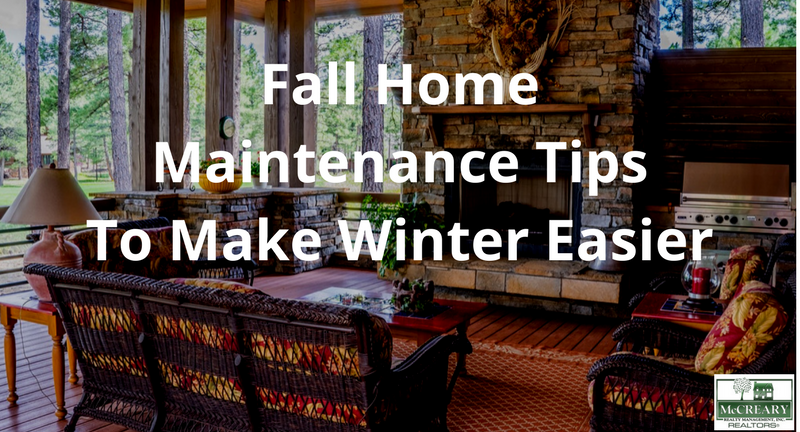
The crisp, cool days of fall are our reminder that winter is coming. So while the weather is still nice, it’s probably a good idea to take a weekend afternoon and tackle a few home maintenance items and avoid problems when the weather gets really cold.
Here are a few home maintenance tips to help you get started:
1. Clean, winterize and store the lawnmower
In many areas, mowing the lawn is unnecessary after Halloween. So when the mower is done for the season follow these steps to store it until spring:
-
Run out the remaining fuel or add stabilizer to keep it fresh in storage.
-
Remove the spark plug and place a few drops of oil in the cylinder. Replace the plug (but not the coil wire) and pull the starter cord a couple times to distribute oil around the cylinder. Then wipe off the deck and check underneath for accumulated grass, removing it if necessary.
2. Bring in water hoses
Leaving hoses attached to faucets will weaken them very quickly in colder weather. So in the fall, remove all hoses from outdoor spigots and turn off the valves to them from the inside. Then open the faucet and allow any remaining water to drain out so it won’t freeze in the pipe. Stretch out hoses and let all the water drain out, and then coil them up for storage.
3. Drain the lawn sprinkler system
Turn water off at the main valve. Open the drainage valves to allow water to drain. Remove sprinkler heads (if necessary) and drain water from them. Some systems without drain valves require pressurized air to blow water out. In some
4. Fill cracks and leaks in windows and siding
A drafty house in the dead of winter is no fun. And even if you caulked last year, chances are good that the expansion and contracting from the warmer weather has opened up old cracks and possibly even created new cracks.
Check around window and door frames, as they likely places for leaks to occur. Also, make sure the areas where pipes enter the house from the a/c unit or electrical lines are filled. Always use caution around electrical wires!
Finally, make sure you use the caulk recommended for the surface(s) you’re filling (wood, vinyl, aluminum, brick). Your hardware store or home center can help with choosing the right kind. Keeping cold air, and especially water, from entering cracks will reduce maintenance and repair costs in the future.
5. Clear out the gutters
As unglamorous as this job is, it is one of the most important. Why? Because clogged gutters mean ice buildup in winter, which is never a good thing. There are several techniques for clearing gutters – from hand removal (wear good gloves) to leaf blower attachments. If you must use a ladder, be careful to place it properly and always look up to avoid contact with electrical wires.
6. Check the roof
Worn shingles, loose sheathing, and gaps around walls and siding all mean potential areas for water to seep in. Be especially vigilant in checking the ‘boots’ around air and furnace vent. To stay safe while going up on the roof, place your ladder carefully, have a spotter as you climb, and be careful of electrical wires while putting your ladder up.
7. Check for poor drainage
Water pooling around the foundation can lead to all sorts of problems. If there are low areas, fill them with soil, making sure not to cover any siding with soil. Also, check where water drains around downspouts.
8. Furnace safety check and maintenance
Professional HVAC service is required for this. A technician will check the furnace for proper and safe operation. This is also a good time to change or clean the furnace air filter.
9. Trees and shrubs around the house
Check for bushes and branches that scrape against windows or siding and trim as necessary. Branches hanging over the house could be a safety issue, especially in areas prone to heavy snow and/or ice.
10. Fireplace and flue
An often disregarded safety checkup involves the fireplace. Use a flashlight to look up the flue to ensure it is opening and closing properly. Keep the flue closed when you’re not burning to keep warm air from escaping up and out! It’s a good idea to have a professional check the chimney for cracks and buildup of creosote and mineral deposits that can cause a fire.
Related Resource
Houselogic 10 Things You Gotta Do in Fall to Skip Costly Winter #Fails

